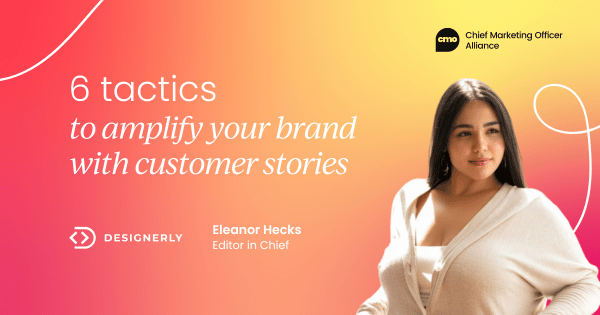Quick question: Would you rather read a long, boring article or take a fun quiz that gives you personal results?
This is a great example of why interactive content is so powerful. It changes passive readers into active participants who engage with your message.
Learning how to use interactive content starts with understanding why it works so well. Here are some benefits:
- It feels personal: When someone takes a quiz and gets results made just for them, they feel like you understand them.
- It sticks in their mind: People remember experiences much better than information they just read through quickly.
- It builds trust between you and your visitors: When you give value through helpful tools or assessments, people see you as someone who wants to help, not just sell.
The results speak for themselves. Interactive content generates twice as many conversions as regular, static content. It also keeps people on your website longer, which search engines notice and reward with better rankings.
If your goal is long-term sales success, interactive content can be the fuel that moves leads through your pipeline.
How to use interactive content in 8 simple steps
So, we know why interactive content is a great idea, but how to get started? Here’s a step-by-step guide to creating engaging interactive content that generates leads.
1. Set clear goals for your interactive content
Before you start creating anything, you need to know what you want to achieve. Do you want more people to sign up for your email list? Are you trying to make your brand more memorable? Or perhaps you want to teach customers about how your offerings can help them?
Your goals will guide every choice you make along the way. If you want email signups, you'll need to learn how to use interactive content to compel users to register first. If you want brand awareness, focus on content that people will want to share and talk about with others.
When you know how to use interactive content with clear objectives, you can design experiences that directly support your business goals.
2. Know your audience well
A 25-year-old college student might love taking personality quizzes, but a busy business executive wants practical tools they can use right away. You need to understand your audience and what they care about.
Start by looking at your current customers. What problems keep them up at night? What questions do they ask most? What kind of content do they already read and share on your website?
For example, if many users seek guidance on user onboarding, offering content like onboarding tooltips might resonate and lead to higher engagement.
Create simple profiles for each group of people you want to reach. Write down their age range, what jobs they have, their biggest challenges, and what types of content they prefer. It will help you pick the right interactive format later in the process.
3. Audit your existing content
Don't start from scratch when you already have good material to work with. Learning how to use interactive content can sometimes mean looking through your best-performing content and thinking about how you could make it interactive.
Go through your top 10 pieces of content one by one. For each piece, ask yourself this simple question: "How could someone interact with this information instead of just reading it?"
You'll be surprised at the possibilities. This audit process is essential when learning how to use interactive content because it builds on the foundation you already have rather than starting from nothing.
4. Choose the right interactive format
Now comes the exciting part – choosing the type of interactive content you want to create. Here are the best types of interactive content to use, depending on your goals:
- Quizzes: Great for entertaining and educating. Use them for personality assessments or helping users discover their needs.
- Calculators: Think ROI calculators, mortgage estimators, or savings tools. This provides immediate value by solving your audience’s problems.
- Interactive videos: Ideal for explaining complex topics. Viewers can click on sections or dive deeper into topics that interest them. These are great for tutorials or product demos.
- Assessment tools: Assessing user’s skills and expertise can be a powerful way to attract serious prospects.
- Chatbots: These are available 24/7 to offer instant help and automatically capture lead information, making them perfect for qualifying prospects.
- Product recommendations: If you offer multiple products, a recommendation tool can suggest personalized options. This can double conversion rates compared to static product pages.
5. Plan your content structure
Once you've chosen your format, map out how people will experience your interactive content. Begin with your end goal and work backward to figure out each step.
For a quiz, decide what results you'll provide first, then figure out what questions will lead people to those results. For a calculator, determine what information you need from users and what helpful outputs you'll give them in return.
Keep everything simple and focused. Most people won't spend more than 5–10 minutes on interactive content. Limit quizzes to 10–15 questions at most. Ensure every single question moves people closer to your goal.
6. Create valuable, relevant content
Your interactive content should help people, even if they never buy anything from you. For example, a marketing agency's social media audit tool should give helpful feedback and actionable advice.
Make sure your topic connects to what your business does. If you sell accounting software, a tax preparation checklist makes perfect sense and shows your expertise.
7. Design for user experience
Your interactive content needs to look professional and work smoothly on all devices. Poor design and technical problems will kill engagement faster than anything else you could do wrong.
Keep the interface clean and simple so people can focus on the content itself. Use clear buttons with obvious labels and make the next steps easy to understand. Test your interactive content multiple times before launching.
Understanding how to use interactive content means recognizing that the technical execution is just as important as the creative concept.
8. Promote and measure your results
Share your interactive content on social media platforms where your audience spends time. Include links in your email newsletters and add references to them in relevant blog posts. Consider running targeted paid ads to drive more traffic to your best-performing interactive pieces.
Track important metrics like completion rates, time spent engaging, and conversion rates from visitors to leads. Most importantly, measure your success based on the goals you set. If you wanted to increase email signups by 25%, are you on track to hit that target?
Conclusion
Customers expect more than static content, and if you deliver interactive experiences, you’ll see better engagement, higher-quality leads, and stronger brand recognition.
Start small. Pick one piece of existing content and think about how you could make it interactive. Test it, measure the results, and build from there. You don't need to revolutionize your entire content strategy overnight.






.png)









 Follow us on LinkedIn
Follow us on LinkedIn




